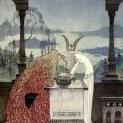Leaderboard
Popular Content
Showing content with the highest reputation on 07/08/2023 in all areas
-
2 points
-
2 points
-
These are GORGEOUS! The Intermezzo and the Postlude are my favorite. I love your melodic sensibility. Your lines feel like they are constantly growing and traveling into new territory, but at a pace that is very satisfying. It's Tchaikovsky-esc. Thanks for sharing!2 points
-
@PeterthePapercomPoser You have incredible ears! I was thinking very much about the relationships between all the centers that I move through, especially between the beginning and the end. I didn't want it to end exactly where it started, but somewhere related. I also did want a half cadence feel for the ending, since the piece is essentially about a hero regenerating. The idea is that she will have much to do, now that she's reached her final form. It's refreshing to have someone listen to my music and hear it the way I do—through the lens of not just harmony and orchestration, but form also. And I definitely have been influenced by the composers you listed. For this specific piece I think my conscious influences were John Williams, Vaughan Williams, Samuel Barber, John Corigliano, Listz, Rachmaninoff, etc. Thanks for listening!2 points
-
2 points
-
2 points
-
2 points
-
Wow! Thanks for listening @Nikolaos Dimopoulos. You are so kind. Just found your YouTube channel. Lovely work. Do you play the accordion?2 points
-
I will be posting the anonymous entries to the "Dreamscapes" Chamber Music Composition Competition here! The entries will be hidden to regular users until the competition closes on Sunday, August 13th, 2023. The competition results and winners have now been determined: Don't forget to take the satisfaction survey! To vote in the popular voting polls go here: For the competition announcement and rules and guidelines go here:1 point
-
hi! i'm new here. this is my first post! i recently write this piece that i think you might enjoy if you are into a darker harmonic palette. https://www.youtube.com/watch?v=QpNLO91ryqE the piece grapples with new circumstances and transition. haunted by aching remembrances, REGENERATION explores themes of disrepair, aftermath, reconstruction, and the desire to change into something truer, stronger, and, altogether, more beautiful.1 point
-
Well it was my first orchestral piece, form 2017 (I was nine years old I think?). Copied it to MS4 for comfortability, and I share it here because why not.Revenge.pdf BTW it was the theme for my D&D campaign called "Revenge", so... yeah it's not a "nice" piece in terms of mood. I'll recycles those motifs, they were great.1 point
-
As I may have mentioned before, one of my specialties is writing for unusual combinations of instruments. Here I have written a four-movement quartet for a rare ensemble consisting of 2 Oboes and 2 Bassoons. I tried to make all the parts as equal as possible. I realize much of what I've written is challenging, but I have shown this piece to professional musicians who have assured me that there is nothing here that is beyond the pale. The opening movement is a standard Sonata-Allegro. I reversed the traditional order of the inner two movements so that the Menuetto is second, and the Adagio ed affettuoso is third in order; I feel this Adagio is one of my better slow movements, owing much to Mozart for its styling. The final movement is unusual in that it is a sort of fugal Sonata-Rondo, with chromatic contrapuntal sections interspersed with contrasting material. ***** Quartet in A minor for 2 Oboes and 2 Bassoons (2019-2021) - Composed: December 27, 2019 - April 6, 2021 at Austin - Style: Classical, ca. 1790-1800 - DuratIon: 24:30 I. Allegro non tanto ma con fuoco (00:00) II. Menuetto: Allegro (08:20) III. Adagio ed affettuoso (12:10) IV. Tempo giusto alla breve (18:35) - Electronic Rendering by Finale 26 music notation software "Human Playback" with NotePerformer 3 artificial intelligence assisted interpretation.1 point
-
This is not a dance suite, but is made out of old pieces in my dance suite folder that didn't make the cut (back when I was writing into the sequencer). The 1st movement - Serenade - is a fast ternary form in Ab major. Originally it was meant to be a prelude to a dance suite. It is in 4/4. The 2nd movement - Lament - was originally meant to be a Courante, but it doesn't satisfy the requirements of the kind of dance that a Courante is meant to be (and it's in 2/4). This piece is in Ab minor and binary form. The 3rd movement - Intermezzo - was also conceived as a prelude to a dance suite. It is in F# major. It is in 4/4 and binary form. The 4th movement - Postlude - was originally meant to be an Allemande but ended up being too slow to be any kind of dance, even though it has some characteristics of an Allemande. It is in 4/4 and E major. The overall form is fast, slower, slower, and even slower. Let me know what you think! I appreciate any of your constructive comments, suggestions or critiques!1 point
-
HI @Henry Ng Tsz Kiu - just a little more of a response to your kind review, for which I thank you. It's interesting to me that you found these parallels with specific Haydn and Mozart works, and I appreciate your observations. You mean at the beginning of the Trio, I assume. I like the interplay between the oboes and bassoon I. Ah, I'm glad you liked that. What did you think of the rest of the movement though? I'm curious because to me, it is one of the most beautiful and well-constructed slow movements I've ever written, highly informed by Mozart (parts of it are reminiscent of the slow movement of the G minor Viola Quintet). Thanks for all you said about the last movement. I'm considering revising it, not sure yet. Thanks again, Henry!1 point
-
Hello @Nikolaos Dimopoulos, Thx for your review and compliment! Your wording is so great! I do practice for quite time and try many times to have this recording! I like the energy in the movement! Henry1 point
-
Hello @Carl Koh Wei Hao, Thanks for your supportive words! Thx! I also find the tempo fast and hard to play with clarity, thus I for sure practice for some time! It's hard to play and bring out the voicing and the details but I'm happy with the result. I do want to try irregular time signature at that time, though here I used it because I wanted to instead of the music needs it. The C sharp minor is important throughout the piece with almost every climax in that key in all the movements, but now I feel like I don't have to use key for cohesion. It's definitely a good try though. Thank you! You can also leave your comments there haha! Thank you Carl! Henry1 point
-
Hey Aaron, Thank you so much! This is for sure the most difficult movement I've ever composed! Thank you for your appreciation! Henry1 point
-
Musescore doesn't work well with them... It creates delays, un-tuned pitches, and won't play some very high or very low notes. Oh and about brass - this is personal taste, but I think the trombones come only when there's a chorale, or to imitate one. Hmm actually, maybe it'd work... Oh and by the way, it'd take me some time to come back for another draft of this because I'm going way too well with the other symphony (I'm doing two at the same time because I have some very different moods everytime I'm writing and I can't help but emulate them in)1 point
-
1 point
-
1 point
-
This is quite a vigorous piece of music! I feel like since the ending ends on the V of the original key that it started in, it sounds like a half-cadence, and hence incomplete. Did you intend for this to be the first movement in a longer work? I think it could work really well in that kind of context. The melodies in the introduction are very beautiful and enticing, almost bringing to mind Scheherazade by Rimsky-Korsakoff. Once the piece gets going, it becomes quite dynamic and full of orchestration details that really dazzle the ears, much akin to a heroic John Williams score. Great brass writing, and great orchestration in general. The climax of the piece is at the very end, but like I said, feels incomplete to me. But that's just my personal opinion. Thanks for sharing this great piece!1 point
-
Hello Everyone, This is my first serious attempt at a video game soundtrack. I used the free plug-in called "plogue sforzando"; highly recommended with plenty of soundfonts to work with! Anyways, I was hoping you guys could further shed some advice on this track of mines(The feedback wasn't too good on this one, probably need to refine my commercial music skills). I would love particular feedback on Instrumentation, form & structure, and melodic continuity("flow"). Score Audio Thank you truly.1 point
-
This is quite unique. I think that because of your use of unusual tone colors, there is sometimes a lack of clarity or definition to the music. The strongest parts imo are where you use acoustic instruments such as the string orchestra or celesta. Some of the other synths and sine and square waves and their chords sound quite muddy - maybe they could be improved with more spread chord voicings? That's just how I hear this piece though - I'm no expert on synths by any means though. Thanks for sharing!1 point
-
Wow - the harp is so beautiful when written for idiomatically and performed live. I love your use of extended techniques on the trombone - having the player sing and play at the same time - quite creative. Nothing detracted from the beautiful mood set by this piece which is meant to be a dedication to someone? Thanks for sharing!1 point
-
This has some great musical ideas that are very well developed and varied! I think the orchestration in the very beginning is too sparse with just solo horn and flute without any kind of backing. If this were mine I would put some kind of padding instrumentation in the background at least like possibly high strings (that's quite a common trick to use high string harmonics to set the stage for foreground material - a background that is quite often eerie or foreboding and sets the expectation that something will be exposited). I like the themes you used and how you treat them! When you double the horn melody with clarinets at measure 17 (and this might be a matter of taste) I think it would have been more effective to have a brass chorale with trombones included an octave lower on that melody and trumpet doubling an octave higher as well. Right now the sections seem bare-bones - I think you've effectively set down your ideas in an orchestral sketch but it doesn't sound "full". The other extreme which you should watch out for is to double everything too heavily and make everything into a full orchestral chorale, which I'm not suggesting you do either. The trill in the winds is also a very "bare" idea without much support. You try to give it some body by having the timpani mimic the rhythm underneath. I think you could stand to have all the strings double that trill in octaves throughout the whole range of the string orchestra. Strings can sound quite strong even if they're doubled by using the same pitch class throughout the whole string orchestra. On a side note I wonder how this would sound if it were rendered using Musesounds instead of the MS Basic soundfonts you're using here. That could also help make it sound much more realistic (although I am personally biased in favor of Musesounds and MS4 even if it is still a bit finicky). About the character of the music - to me it doesn't quite sound triumphant. I perceive a sense of dread to the music with only a few phrases giving contrast by introducing some lightness. Thanks for sharing this symphonic sketch and I'm looking forward to your progress on this piece!1 point
-
and you say my scherzo was hard I think the scherzo proper is well thought out, and I like how something that is supposed to be F major begins and ends in A major. It can really take on the first movement, which (the first movement) was a very organic and flowing piece that you can't feel and breaks between themes, and here the scherzo provides those breaks. And no, breathing is pretty much part of a performance imo. Chamber music (and orchestral music to some extent but is less noticeable I suppose) depends on it. What makes you feel the "artificial"ness of the trio? I think like Carl said, harmonically going into C# minor is great. It's probably a thematic consideration? Or was it some motif overloading issue? I tried putting my hands on the keyboard for this one and felt the 1st movement motif is already quite abundant in the scherzo proper, perhaps the trio can use a different atmosphere? idk. Is there anything you would prefer to change up?1 point
-
1 point
-
Hi Jordan and welcome to the forum! (I'm also new here!). Very beautiful composition perfectly structured. I like the variations and the epic feel at the end. It starts with a sad tone and apparently at the end, the hero of the composition managed to regenerate to something more true, stronger and beautiful. Thumbs Up!!1 point
-
Hi @Nazariy, This is a pleasant and lovely piece! As @Quinn noted you have great use of characteristics and timbres of each instrument. I particularly like the interplays between the instruments in mov.1, it's so adorable. I like moments of imitation in b.15 and 96; B.96 is also beautiful for the modulation to Ab major. The texture in b.142 is great, I like you are combining flute and clarinet for a different sound there. Second movement is serene and as Quinn noted, chorale like. It's beautiful, and I hope horn and bassoon will feature more here for mood and register change, since in the first movement is the top three winds (flute particular) carrying the melodic lines mostly. The fugal third movement is comfortable and not overly-contrapuntal for a relaxing piece. One thing I notice is that the oboe is almost always acting as the second melodic instrument, it almost never crosses beyond the flute except a few times in the 2nd movement. Maybe you can have oboe and clarinets feature more on the top part, and bassoon can carry more melodies, instead of just have them playing in the imitation parts or when paired up. However this is personal and doesn't affect my love towards this piece. Thanks for sharing! Is this piece for a call for score? Henry1 point
-
Hey Gustav, thank you for the encouragement! I used Musescore 4 for this project. Though lacking in extensive reverb and other assets, I thought it wasn't bad at all. My friend did recently suggest I use FL studio(just downloaded the magical 8-bit to work with as well). TBH, I found a bit more difficulty working without a score because it obstructs my workflow(having to adjust note values and placements all the time). Not sure if FL has a music notation option, but if it does please let me know. Here's another track I worked on using Musescore:1 point
-
Your score is a little hard to follow, as there are some weird notational things in it, but just listening to your piece it's pretty chill and has a somewhat "stardew valley" type of feel. I've used Plogue Sforzando with my DAW (Ableton), and it's not bad but it takes work to make it feel expressive. Might be worth looking into other sound fonts and libraries to hear different options and feel how various libraries represent certain instruments and sounds. There are several that have free or inexpensive (entry level/trial) options, Spitfire comes to mind. I think as a composition, everything's nice and there are some beautiful ideas! I think where things might be improved is in the musicality of the playback. All your notes have the same intensity and the dynamics and phrasing could be more intense. If you're using notation software like finale or sibelius or musescore, try writing in more dynamics to help the phrasing, and some articulations to emphasize important notes or to de-emphasize lesser notes. If you're using a DAW like pro-tools or ableton, try automoting some note velocities and dynamic changes. Keep writing! You're definitely on the right track and should keep pursuing this 🙂 Gus1 point
-
@Henry Ng Tsz Kiu Thanks for listening to and commenting on my piece! I'll respond at greater length later! 🙂1 point
-
1 point
-
I love this combination, they are two of my favorite instruments, but to tell the truth, this is the first time I hear them in combination. And I love the music you wrote.1 point
-
1 point
-
Hi @Michalis, I agree with @Samuel_vangogh! I have never thought of this combination and think the harp will be overwhelmed by the trombone! But it sounds really innovative and interesting here! I love that you have include that augmented 2nd of G# and F natural to create some exotic feeling, which makes the harp here very special. The trombone here, rather than explosive people (including me) first think of, is very contemplative here. The recording itself is also great. It makes the piece much more realistic as the trombone player can restrict his volume for the harp! Thanks for sharing! Henry1 point
-
1 point
-
Hey @Michalis! At first glance it sounds pretty good, I think we could help you more if you also shared the sheet music! I didn't think that trombone and harp combination would sound this good 🙂1 point
-
Hi @J. Lee Graham, I enjoy this whole work in classical style. The interplay between instruments is lovely and Let me take note on some passages I like: 1st movement: -I like in b.15 when you have a Neapolitan sixth followed by a deceptive cadence. -B.36 reminds me of the cadence in Haydn's Quinten Quartet in the first movement, b.48 with that "mixolydian" flat ^4. -B.63 reminds me of Mozart's Sonata for two pianos with the interplay between the two oboes. -The modulation to b.78 is interesting. The extended C minor passage in b.92 seems to compensate what's not fulfilled in the second subject when C minor is suppressed by its major counterpart. 2nd movement: -I love those parallel thirds in the oboes! So pastoral here! 3rd movement: -I love that minor preparation in b.11! 4th movement: -A nice double fugue opening! -That interrupted cadence is becoming the feature of this piece esp when you repeat that in b.43. -I like that suspension in b.83 which is also derived from the fugue subject. - I find the return of A minor in b.138 abrupt though. But at the same time I think you may be giving a false impression for audience that it's a repetition of the exposition. I think you can modify this A section though to become shorter. -Will a F# in b.238 second oboe better? -Where is the middle C section or development section?🤪 -I think that chromatic subject has never been played by the bassoon. Maybe some invertible counterpoints to be used? I hope maybe the bassoons can be featured more in the piece. But overall this is an enjoyable piece from you as always. Thx for sharing! Henry1 point
-
@HtWinsor Thanks very much! It is rather playful!1 point
-
1 point
-
Maybe it’s a coincidence, but this actually reminds me a little of the piano concertos of Camille Saint-Saens, crossed with a lot of Rachmaninov. Over all very good, the piano part is very well written and the orchestration is nicely done. The one thing I found lacking though, is that you never really allow the piano to have a truly lyrical moment. When you bring in that more lyrical theme, you immediately shift the piano back to a more virtuoso passage. Even when the piano takes up that theme, it’s still very showy/virtuoso. Sometimes it’s the note you don’t play that are the most meaningful! Other than that, great job!1 point
-
Yup it's an unknown territory for me too! Thx so much Setthavat! Thx for your BIG compliment! Hopefully the 2nd movement will be even better! Henry1 point
-
Thank you as always for the reply, Henry. Once again, summer school has impeded my attempt to produce a quick response. Muzak is a genre outside my comfort zone as well, but I am really hoping to expand my grasp on multimedia music(especially if I am to write for the screen). I am thinking about putting in different drumsets to get a more soothing sound. I love the suggestions on the instrumentation(though i think the vibraphone might be a tad dull). Commercial music is tricky business when you think about it; definitely not your typical "sit, down and listen" classical etiquette. Also, your sextet in G-flat is a very well-conceived work, congratulations on it and thank you for enriching the world with new cultural soundscapes.1 point
-
Hi @Setthavat, Well I'm probably the worst one on this since I never write commercial music. For me some commercial music needs to be fast paced and catchy with some memorable melody and rhythm, but I don't know. What particular skills are needed for commercial music? For me it's cozy music which does fit commercial setting like the supermarket or something! I love the relaxing mood you have portrayed here. The harmony is somewhat jazzy for me. I'm thinking of to use vibraphone to replace the celesta for a more cozy feeling. What do you think? Will it be a better commercial music with a constant beating throughout the track? I love that drum set, and possibly adding maraba will be more relaxing too! Why is the ending oboe an octave lower than in the score? I think form and strucutre is not very important in commercial music? The customers are not attentively listening the music and no one cares about it except music major probably LoL. I think the flow can be even better if there's constant beating. It's great to have a gradual dimineundo at the end, but for me to have an oboe solo at the end may sound strange for a commercial music? I think it will help its flow by having some accompaniments there. Also it will help by providing a smooth transition back to the beginning since some commercial music are in a loop I think. But thanks for sharing. I really enjoy this one Setthavat! Sorry I know nothing on commercial music and my advice may be of little help LoL. Henry1 point
-
One of my favourite works in the repertoire are the suites by Holst and specially the Holberg suite by Grieg. You captured that line of nostalgic retro-classical perfectly.1 point
-
Sounding good! I would agree that it's a little left-heavy, though. I also thought the dynamics were a bit too much of a roller coaster toward the start of Serenade, but otherwise enjoyed it.1 point
-
This collection deserves its place. I like it very much. I find a difference in style between the first two (more galant) and the others (more romantic).1 point
-
Hi Peter, I have to say the Serenade begins like London Bridge is Falling Down! As Quinn said I won't comment on the technique since I have nothing to add! I love the middle section with the harmonic colors! You can probably use D.C al Coda instead of 1st ending I guess. The lament ends surprisingly on Gb major and this make me think of Renaissance modal cadence. Very soothing and fluent exchange of voice here! For the Intermezzo, I freakingly love this! It has some Mahler 10th in it with the contemplative undertone!! The harmonic lanfuage is less dissonant but very similiar!! You should have extend this!! For the postlude, shxt! I cry for its beauty and transcendence. Again I want this to be extended with this utter beauty!!! It's simple but utterly beautiful for its simpliclity. It's like beauty directly in front of you without any artificial decorations, just beauty itself. A simple octave up for the theme transform it from a contemplative and immanent theme to a transcendental one! It's very Brahmsian for me like his E major slow movements in Symphony no.1 and no.4. I utterly love this postlude which ends this Suite perfectly. For me the order is amazing sincw it gets better after one another! I absolutely love this and thanks for sharing Peter!! Henry1 point
-
Very nice work. Classical and succinct. Nothing to comment on the composition or engraving since you're anyway accomplished in harmony, vertical spacing in chords, thematic work and so on, and the rendering was ok although a little more stereo spread wouldn't be amiss. Violins 2 might be given a little more volume in the Postlude when they take over melody from Violins 2, important from bar 7. My only comment is about the arrangement. You give Violins 1 all the work in the intermezzo. There's a case for sharing the melodic part with violins 2 and even repeating (for either of them) the main theme an octave higher in bar 7. (It also might be possible to share the principal melodic work between the two violins elsewhere - but that's just a matter of preference. Oh, and ok, I can't know how you produced the scores but if using notation software, the dynamics could be a little more...dynamic! It's one of those small suites that would make a wonderful live performance. All good then. A pleasant listen, away from the discords and clashes of the musical world I seem to live in. A musical holiday is always nice... blue skies, light and air.... :>D1 point

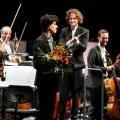

.thumb.png.8b5b433a341551e913a34392660bc95b.png)



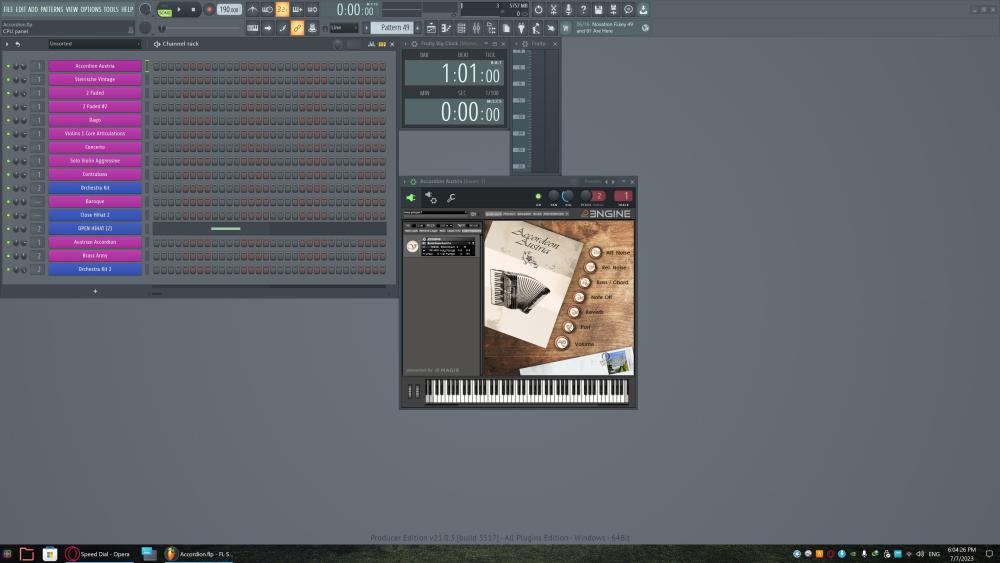
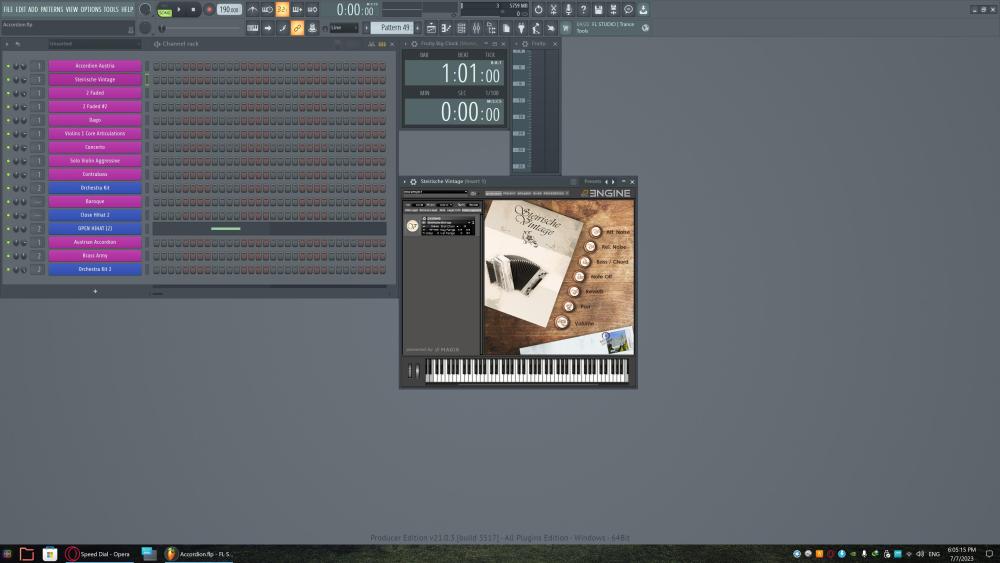
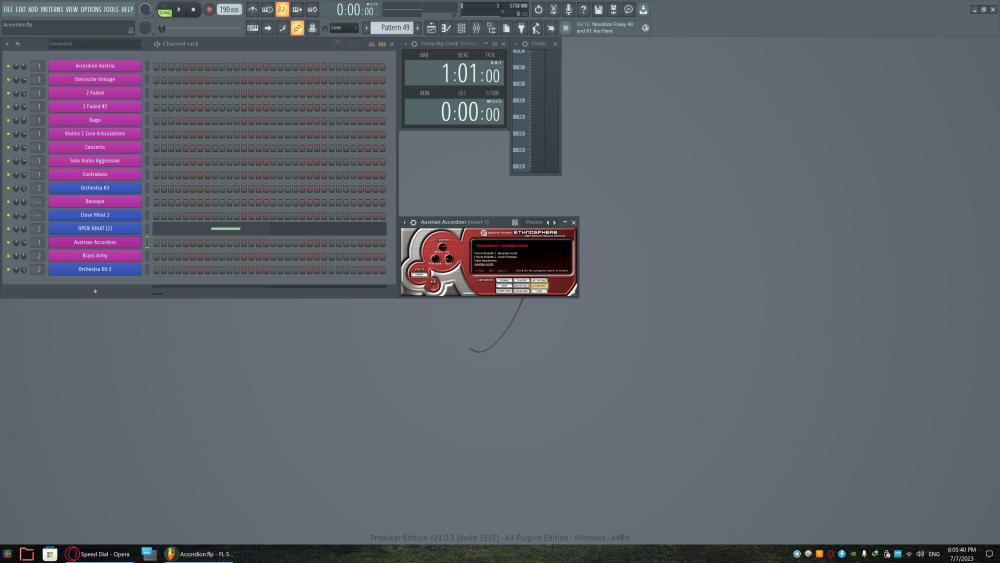
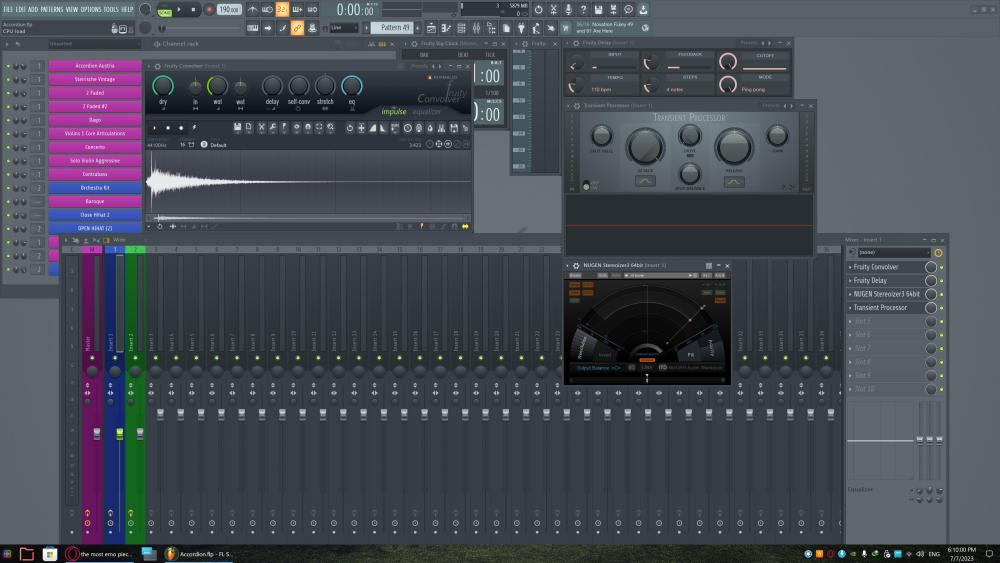

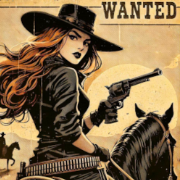

.thumb.jpg.e5f26b712b4f9622f521b10d8a53c6d6.jpg)

